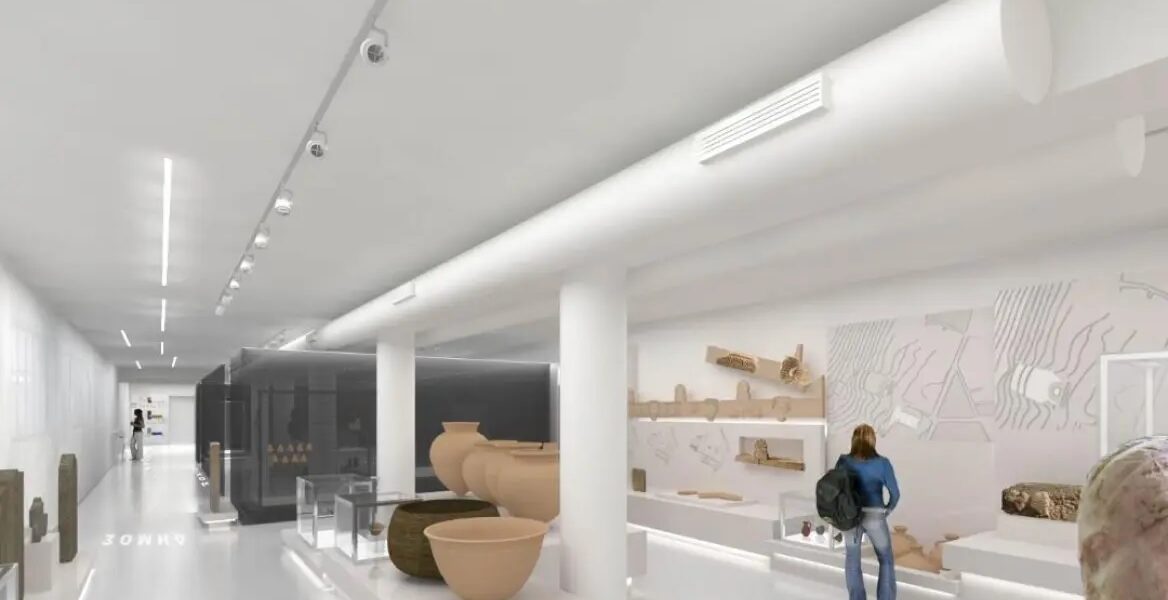The new Archaeological Museum of Argos is nearing completion. Very soon, the Peloponnesian city will have a museum up to modern standards that will match its ancient glory.
The building complex of the Archaeological Museum of Argos consists of two buildings, each of a different era and architectural style.
One is the historical neoclassical architecture residence of general Dimitrios Kallergis, built in 1830. Next to the Kallergis house is the second building, constructed in 1959 by a Russian architect – it is a building of the modern era, with simple geometry and rough details, intended for Museum use.
As part of the project to modernise the building, with a total budget of 3,099,673 euros, included in the Regional Operational Program “Peloponnisos 2014-2020”, the Kallergis Building also functions as part of the Museum, while the exhibition spaces occupy the spaces of the more modern building.
The building has three levels, ground floor, basement and floor. The exhibition spaces of the Museum are on all three levels. All levels are accessible by the disabled. A connection to the Kallergis building and access to the outside area of the atrium is planned.
“Following the modern principles of organising a museum space, the long history of Argos is highlighted,” said the Minister of Culture and Sports Lina Mendoni.
“Through the exhibition chronology, visitors follow a path that allows them to understand the complex political and social history of the ancient city.
“The fact that the Museum is developed in the now restored buildings of two different chronological periods and architectural styles, the neoclassical Kallergis house and a building of the modern movement, acquires its own special interest.
“With the renovated Archaeological Museum, the Byzantine Museum in the adjacent barracks of Kapodistrias and the Epigraphic Museum, which is also planned to be housed in the same building complex, Argos acquires model museum infrastructures and now joins the map of dynamic cultural destinations.
“The cultural identity of the city emerges over time, while the city acquires a significant development advantage.”
READ MORE: Ancient seal fragment returns home from Sweden after 100 years.

